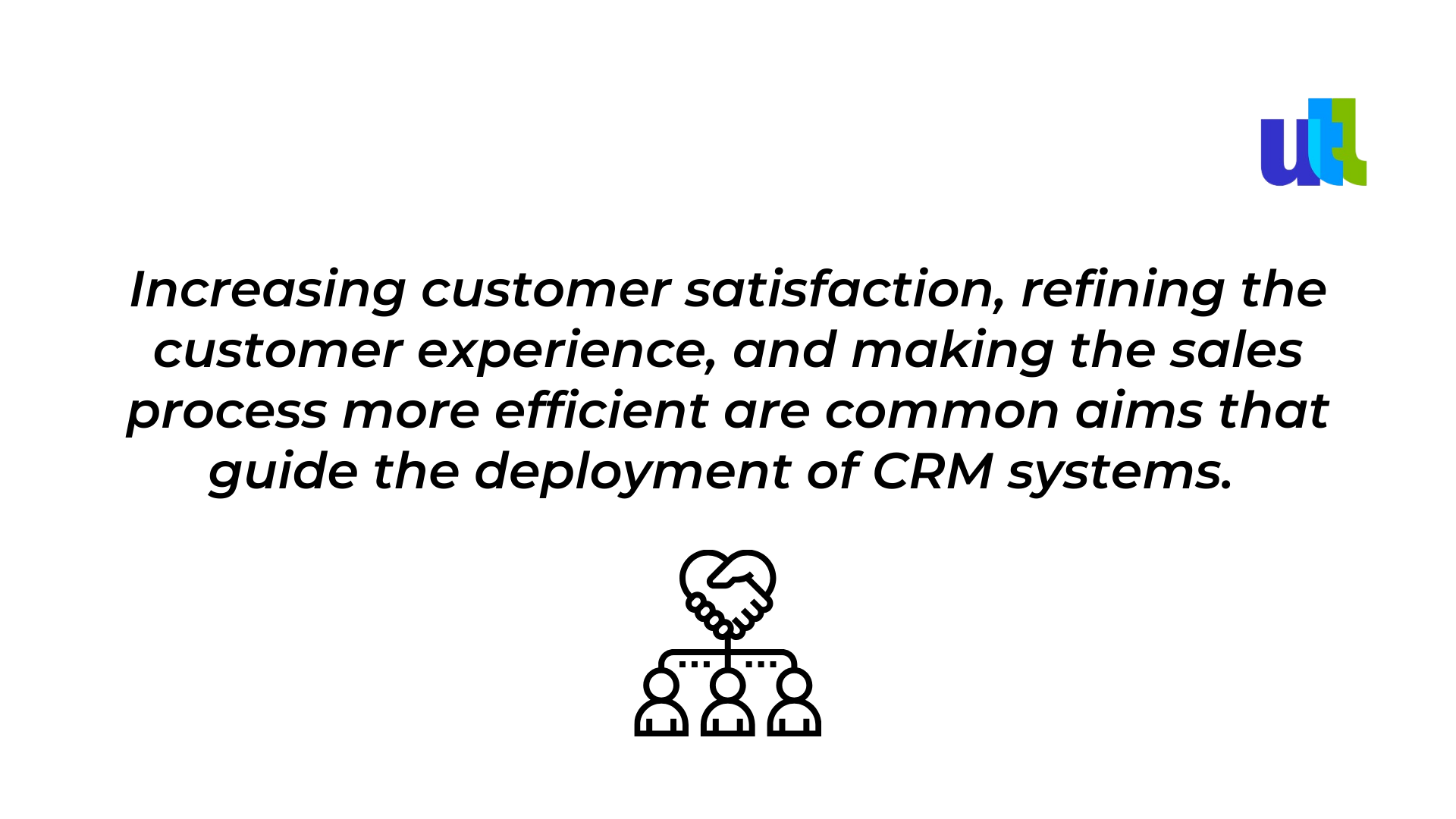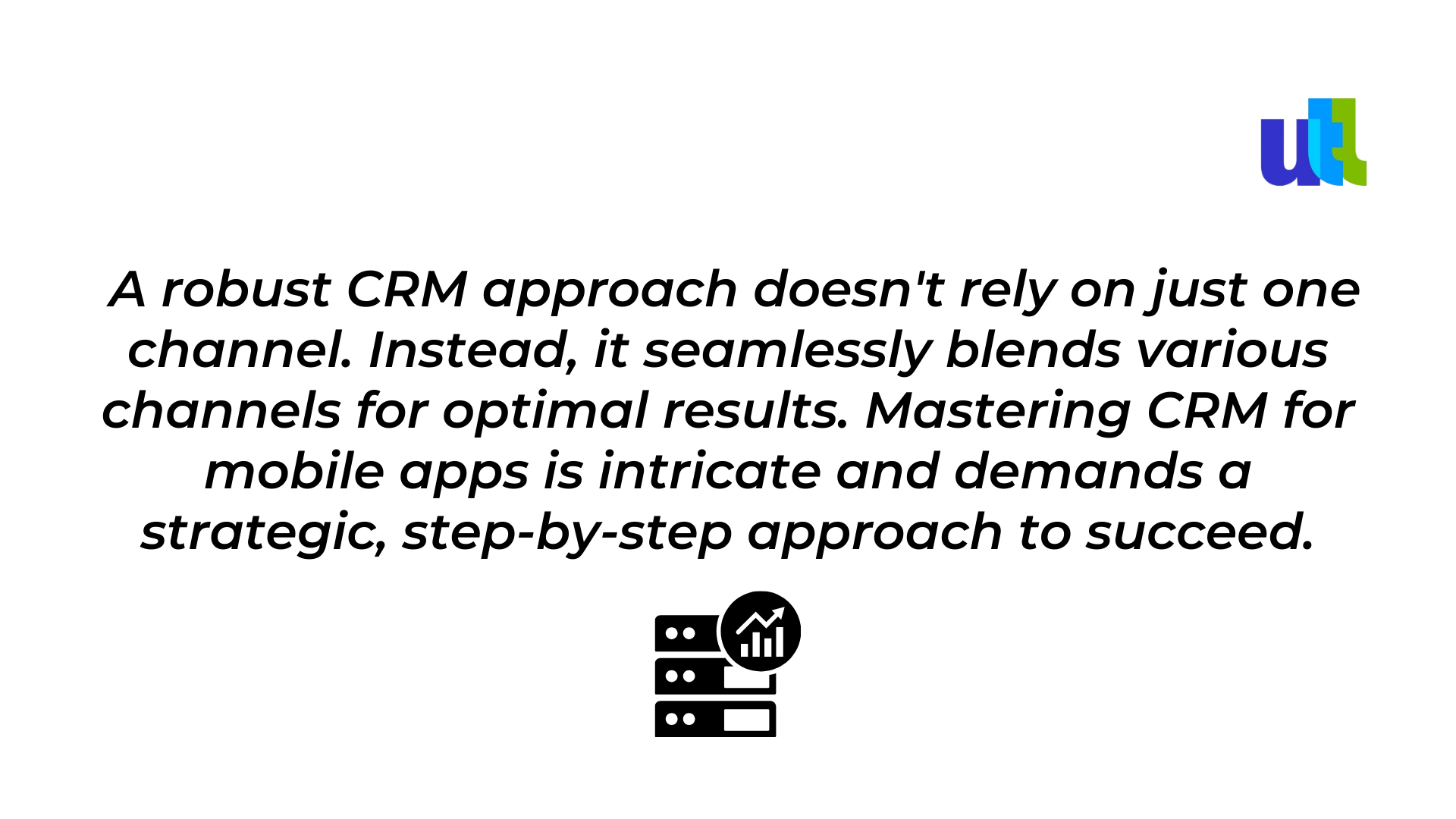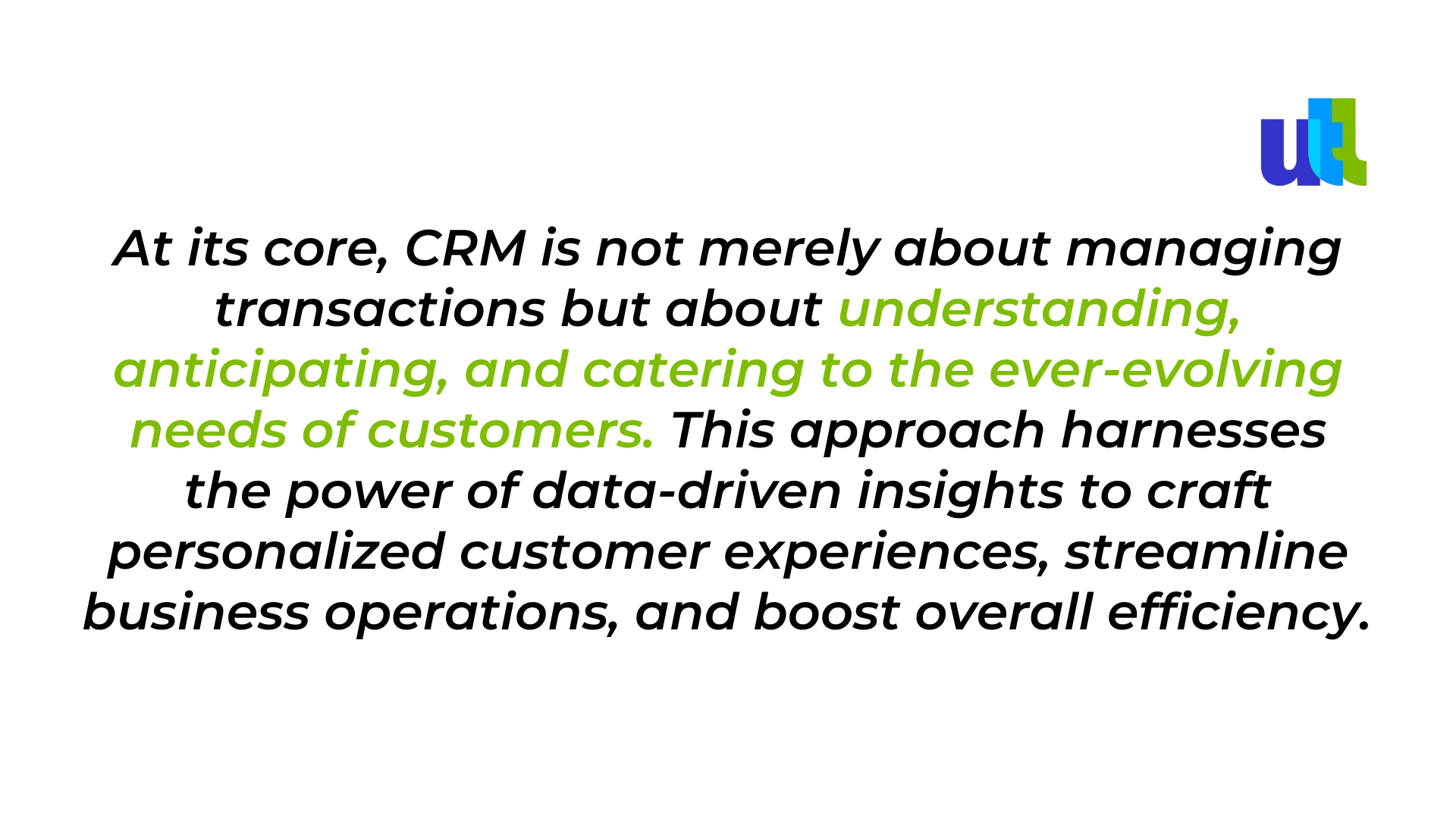In an era where customer interactions define the success of businesses, a robust Customer relationship management (CRM) strategy is essential. Such a strategy articulates a company’s ambitions and methods for enhancing and managing customer engagements through a CRM system. Essentially, it is a blueprint for nurturing lasting relationships with current customers and fostering connections with potential ones.
The foundation of a CRM strategy is the idea of providing customers with individualized experiences through focused, data-driven interactions. A CRM strategy makes marketing messages more memorable, sales teams more attentive, and customer service more proactive. It all comes down to giving these frontline staff a thorough grasp of the behaviors, requirements, and preferences of their customers so they can create experiences that not only satisfy but also anticipate their needs. With this calculated approach, every engagement is guaranteed to be more than just a transaction and instead to be a step in creating a customer-centric culture that fosters loyalty and corporate expansion.
The foundation of any CRM strategy is the set of goals that a company aspires to achieve in its customer relationships.

These goals inform the creation of specific CRM practices—the concrete actions and business processes that bring the strategy to life.
CRM is more than a business buzzword—it is a comprehensive approach to managing and improving interactions with customers and potential customers. The implementation of CRM strategies can transform a fragmented collection of customer data—spread across various spreadsheets and applications—into a cohesive, efficient system that captures the full spectrum of customer interactions.
Who stands to gain from adopting a CRM system? Simply put, any entity that interacts with customers—no matter the size or sector—will find value in the nuanced insights and organizational benefits that a CRM strategy delivers. From manufacturers to retailers, from brick-and-mortar shops to e-commerce platforms, every business hungry for a data-driven and personalized engagement with its clientele will find a CRM system to be an invaluable ally.
Key takeaways from a CRM strategy:
- CRM systems help businesses track customer needs and preferences, directly enhancing customer experiences and satisfaction.
- CRM strategies give teams across the company valuable insights, enabling the development of more effective customer interaction practices that can increase revenue.
- The centralization of customer data in a CRM system significantly enhances data accuracy and provides a unified view of each customer.
- Well-implemented CRM strategies streamline business processes, amplify customer engagement, and use data insights for more effective decision-making, thereby boosting sales, customer retention, and reducing costs.
A CRM strategy is not a one-size-fits-all solution but is instead tailored to the unique needs and goals of each business. By prioritizing the collection and analysis of customer data, companies can not only respond to but anticipate the needs and preferences of their clientele, positioning themselves as leaders in customer service excellence.
13 CRM strategies
CRM strategies serve as methodical approaches for businesses to customize interactions, ensuring customers receive attention tailored to their individuality. The 13 strategies outlined below can significantly enhance CRM frameworks and systems. They aim to augment customer satisfaction, amplify sales and revenue, and refine business operations.
Deciding which strategies align with your company's needs is a pivotal step towards pinpointing the appropriate CRM system requirements for your enterprise.
1. Setting clear CRM goals
A successful CRM strategy begins with defining clear objectives. Assess your business’s current position and determine where enhancements are needed. Objectives should be SMART—Specific, Measurable, Achievable, Relevant, and Time-bound. For example, goals might include a 10% sales increase in the following quarter or a 5% yearly boost in customer retention. Align these objectives with CRM system capabilities to support their achievement, such as better customer data visibility to augment sales strategies, enhanced customer profiling for personalized engagement, and optimized issue resolution times to boost customer satisfaction.
2. Conducting a business audit
A thorough business audit is key to uncovering inefficiencies and aligning operations with customer needs, paving the way for an effective CRM system implementation. This involves examining sales, marketing, customer service, and data management processes to identify areas that need improvement. The insights gathered should inform your CRM system’s design to support your business objectives, such as increased sales or market share.
3. Mapping the customer journey
Understanding the customer journey allows for a better visualization of the customer's experience through the purchasing process. By identifying the various touchpoints, from awareness to post-purchase, businesses can gain insights into customer behavior, needs, and decision-making. Segmenting customers into buyer personas based on shared characteristics can refine marketing efforts, leading to personalized experiences that cater to the specific needs and preferences of different customer segments.
4. Defining the Sales Process
Articulating a clear sales process is vital to ensure that CRM tools effectively enhance sales efficiency. By detailing each stage of the sales process, businesses can employ their CRM to automate mundane tasks and provide sales teams with rich customer insights, ultimately optimizing sales approaches and boosting conversion rates.
5. Analyzing the market
In addition to understanding internal processes and customer behavior, examining the competitive landscape is crucial. Knowledge of where your business stands in comparison to competitors can inform your CRM strategy. For instance, studying competitors' customer service and product offerings can unveil opportunities for differentiation and growth.
6. Leveraging data for enhanced productivity
A well-integrated CRM system offers data insights that can significantly increase productivity. To make data actionable, ensure it’s aligned with the CRM strategies and goals. Establish relevant KPIs that reflect progress towards these goals. Utilize CRM tools and dashboards to track these KPIs, providing a real-time view of critical business metrics and enabling data-driven decision-making to fulfill CRM objectives.
7. Streamline and refine data management
Regularly purifying your data is crucial for ensuring that marketing efforts are directed accurately and resourcefully. Routinely cleanse your lists to remove low-engagement contacts or those who have unsubscribed or become inactive. Streamlined data heightens the precision of customer communication, fostering enhanced satisfaction with your brand. Implement an automated process within your CRM system for consistent cleansing to remove inaccuracies, duplications, and outdated information.
8. Leverage automation and artificial intelligence
Integrate automation and AI to support the effectiveness of your CRM. By automating monotonous tasks, like data entry, and utilizing AI for refining customer segmentation, you can anticipate risks and improve customer interactions. AI’s analysis of customer data can aid in predicting behaviors and crafting targeted marketing tactics. Automation within a CRM can prompt timely emails, schedule posts, and nurture leads, enhancing engagement and customer contentment while also saving time and resources for your teams.
9. Provide tailored customer experiences
To engage users effectively, deliver content and experiences customized to their unique interests and requirements. Personalization is key in cultivating customer relationships, as evidenced by reports highlighting consumer frustration with irrelevant content. Employ techniques like cookies, profiling, and algorithms to offer recommendations based on past purchases or modify website features for different customer segments. Aim for relevancy in every interaction to boost engagement and conversions.
10. Enhance marketing with CRM insights
Utilize CRM insights for a deep understanding of customer responses to marketing initiatives. Create individualized communications by leveraging CRM data, personalizing messages with details like names and company affiliations. Analyze past marketing efforts to determine efficient allocation of future marketing investments. Use CRM data to fine-tune campaigns for more personalized messaging, which leads to higher conversion rates.
11. Opt for certified integrations
Choose only CRM-approved integrations for additional functionalities, such as help desk or accounting software. Certified integrations ensure security, reliability, support, and compatibility, reducing the risk of data issues. Integrating CRM with ERP systems can consolidate data across operations, improving real-time data access for enhanced customer communication and process automation.
12. Establish CRM as the primary data repository
Consolidate data from various departments within a central CRM system to overcome the challenges of siloed information. A unified customer data view promotes collaboration, informed decision-making, and consistent customer interactions. This accuracy reduces errors and costs while improving reporting quality, guiding better business decisions and operational enhancements.
13. Monitor and analyze performance metrics
Regularly assessing CRM performance metrics is vital for understanding the success of your strategies and pinpointing areas for improvement. Align your tracking efforts with CRM strategy goals, such as customer retention or sales cycle reduction. Define and monitor key performance indicators (KPIs) relevant to your objectives, ensuring your CRM tactics remain effective and adapt to changing conditions.
CRM strategy examples
1. Value-added content strategy:
Effective CRM strategies hinge on providing content that genuinely caters to the customer's needs. A prominent example is a cleaning service sharing case studies from satisfied clients. Through these narratives, potential customers can resonate with the experiences shared, positioning the business as a reliable industry expert.
2. Customer loyalty incentives:
Reward systems play a pivotal role in driving repeat business and fostering brand loyalty. A classic example is Starbucks' points-based rewards system. It allows customers to accumulate points with every purchase, incentivizing them to return. Similarly, airlines deploy tiered loyalty programs, where frequent travelers receive more exclusive benefits, enhancing their loyalty to the brand.
3. Monitoring customer behavior:
A profound understanding of customer behavior can be the cornerstone of personalized marketing. For instance, a fashion retailer could meticulously track a regular customer's purchasing habits. When the customer deviates from their typical buying pattern, the retailer can entice them back with targeted offers, ensuring the bond between the brand and the customer remains strong.
4. Web personalization techniques:
A tailored web experience can significantly enhance user engagement. Businesses can customize various website elements, such as calls to action or headlines, based on user data. For instance, a business could modify its homepage for returning users to provide a more personalized touch, ensuring they feel valued and enhancing their overall browsing experience.
CRM systems, when adeptly utilized, help businesses foster and nurture their customer relationships. These strategies, ranging from content creation to website personalization, not only drive sales but also fortify brand loyalty.
Customer relationship management (CRM) for mobile platforms
Different communication channels can be leveraged depending on the message to be conveyed and the permissions granted by customers:
- Push Notifications: These are brief alert messages displayed on a phone's lock screen. They are especially effective for time-sensitive or location-specific notifications but necessitate explicit user consent.
- In-App Messages: These messages pop up within the app when a user accesses it or takes certain actions. No opt-in is needed, making them effective, especially when paired with push notifications.
- Emails: This channel is beneficial for conveying more detailed and elaborate information to customers.
- App-Inbox: It's akin to an email inbox but is integrated within the app. It keeps messages for users to access anytime they use the app.
- Text Messages: Although not as prevalent today, text messages can still reach users in a unique, albeit potentially intrusive manner.
It's worth noting that these channels can also complement desktop communications if the platform supports it.

Conclusion
In today's hyper-connected world, the relationship between businesses and their customers is paramount. A well-thought-out Customer relationship management (CRM) strategy empowers companies to transform ordinary customer interactions into robust and meaningful engagements, fostering both loyalty and growth.

Whether it's through setting clear goals, analyzing the market, or leveraging the latest in automation and AI, a strategic CRM approach is instrumental in positioning a business as a leader in customer service excellence. Furthermore, the rise of mobile platforms introduces new avenues for engagement, requiring businesses to master various communication channels for optimal results. In sum, an effective CRM strategy is not just a tool but a mindset, where the customer sits at the heart of every business decision, ensuring long-term success and sustainability.
For free consultation on customer relationship management through apps, click here.
----------------------------------------------------------------------------------------------
View the full presentation:
WRITTEN BY
Milda Butkeviciute
2023-11-08


































































































































































































